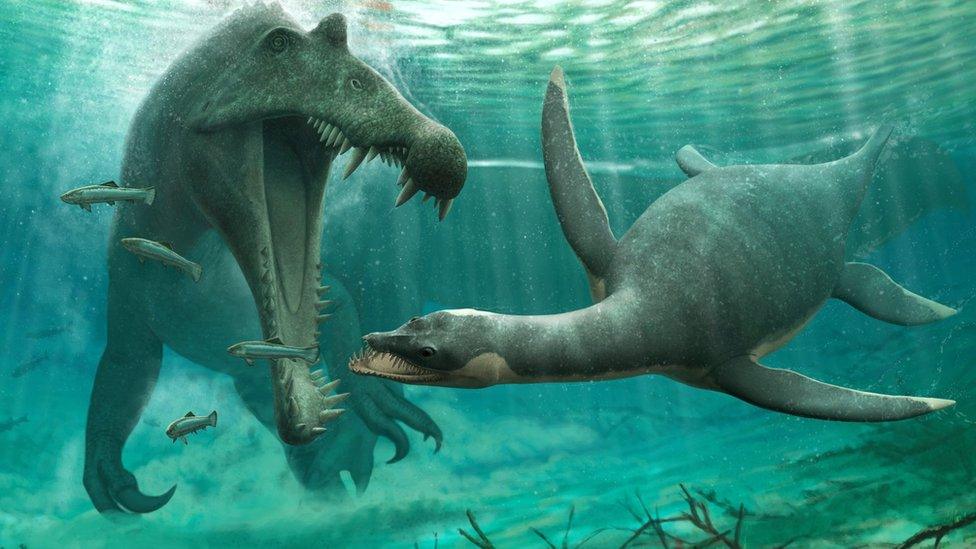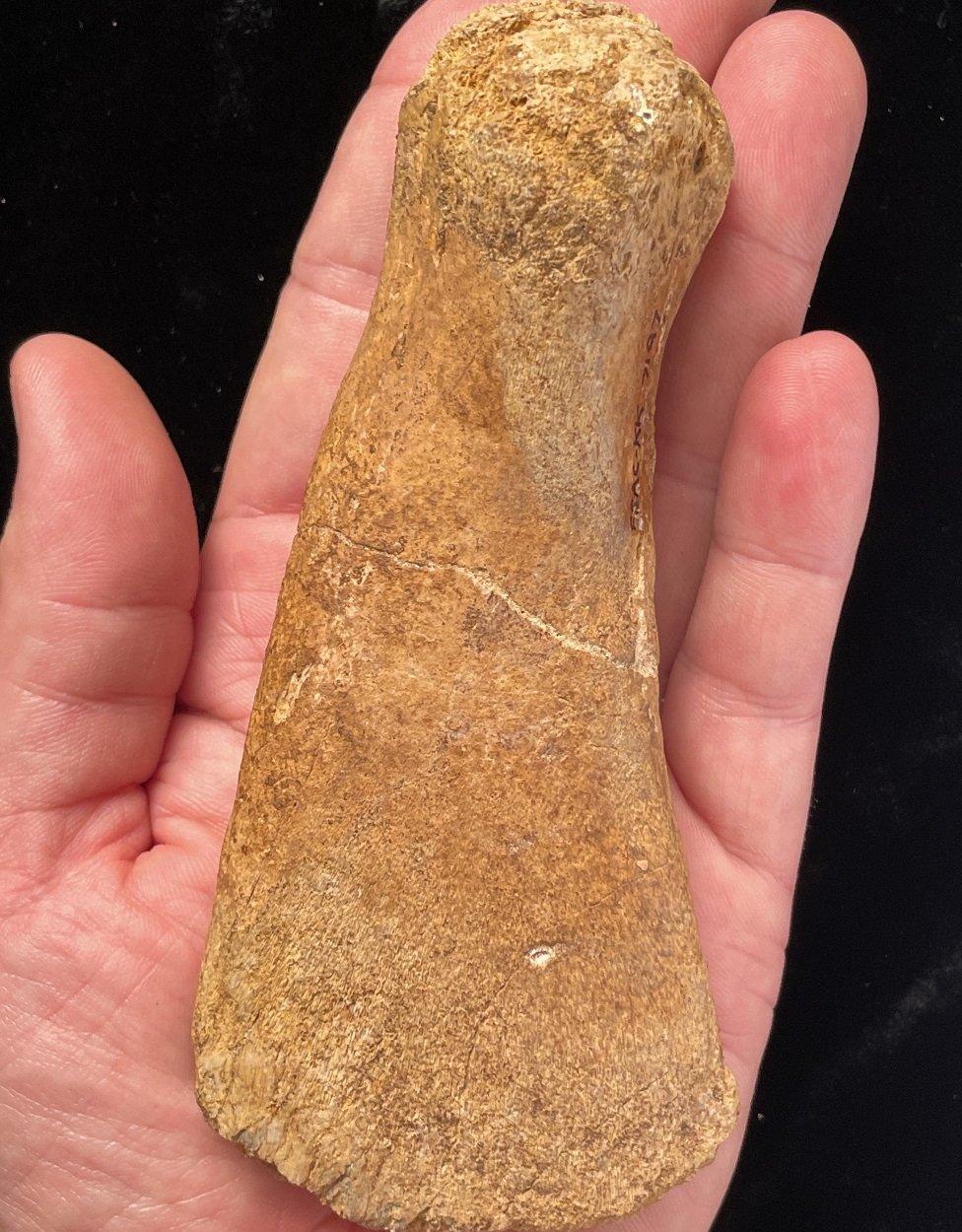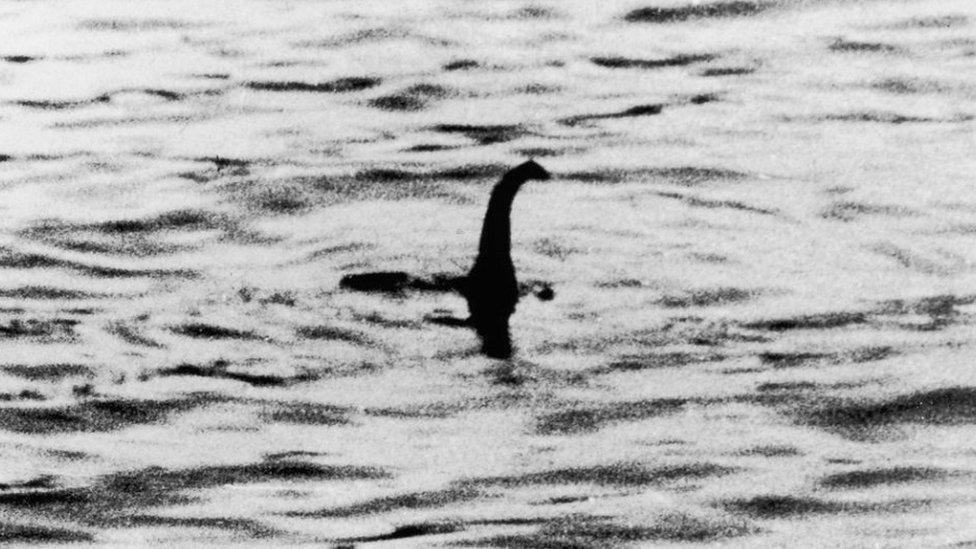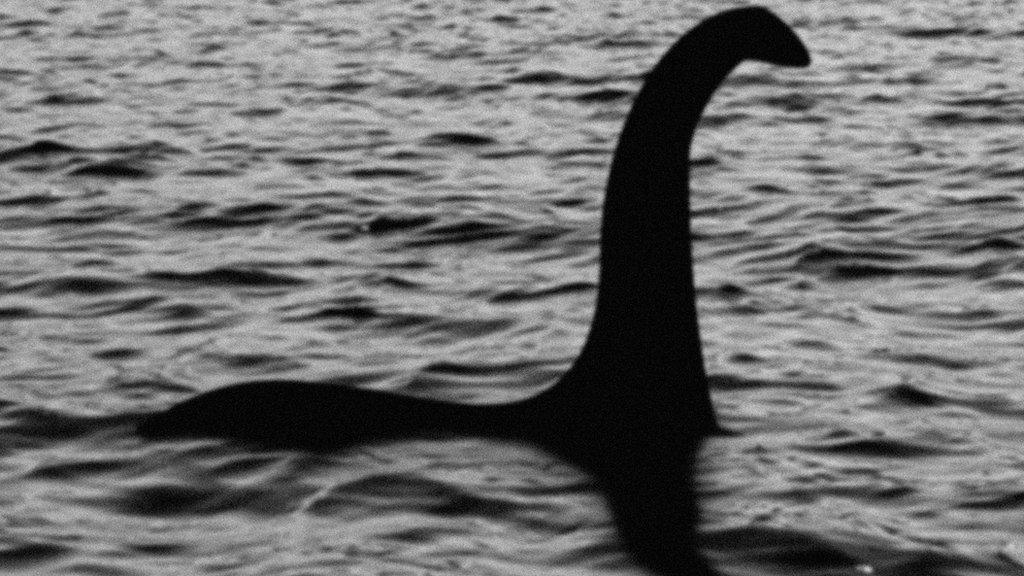African fossils show 'monster' could have lived in Loch Ness
- Published

An illustration of a plesiosaur evading a larger predator
The discovery of plesiosaur fossils on an ancient African riverbed suggest a 'monster' could have lived in freshwater Loch Ness, say scientists.
Fossils of the prehistoric reptile were found in a 100 million-year-old river system in Morocco's Sahara Desert.
These suggest some species previously thought to be saltwater sea creatures, may have lived in freshwater systems.
University of Bath researchers said it was "plausible" that a plesiosaur could have survived in the Scottish loch.
But the team also points out that plesiosaurs died out along with the dinosaurs 66 million years ago.
Bones and teeth from 3m (10ft) long adults and an arm bone from a 1.5m (5ft) long baby were found on the Cretaceous age riverbed.
Dr Nick Longrich, from the university's Milner Centre for Evolution, said: "We don't really know why the plesiosaurs are in freshwater.
"It's a bit controversial, but who's to say that because we palaeontologists have always called them 'marine reptiles', they had to live in the sea? Lots of marine lineages invaded freshwater."

Bones and teeth of small plesiosaurs were discovered in an ancient river system in the Sahara Desert
While marine animals like whales and dolphins wander up rivers - to feed or because they're lost - the number of fossils suggest this is unlikely.
The scientists said a more likely possibility was that plesiosaurs were able to tolerate both fresh and salt water.
Researchers from the University of Bath, University of Portsmouth and Université Hassan II in Morocco were involved in the discovery.
Plesiosaurs, first found in 1823 by fossil hunter Mary Anning, were reptiles with small heads, long necks, and four long flippers.
Their fossils have inspired reconstructions of the Loch Ness Monster.
The freshwater loch, south west of Inverness, was formed during glacial processes in the Great Glen more than 10,000 years ago, external.
Dr Longrich added: "Isolated bones actually tell us a lot about ancient ecosystems and animals in them. They're so much more common than skeletons, they give you more information to work with.
"The bones and teeth were found scattered and in different localities, not as a skeleton. So each bone and each tooth is a different animal. We have over a dozen animals in this collection."
In terms of the monster legend, the scientists said on one level it was plausible that a plesiosaur could survive in the loch's waters.
They added: "But the fossil record also suggests that after almost a hundred and fifty million years, the last plesiosaurs finally died out at the same time as the dinosaurs."
- Published13 July 2022

- Published5 September 2019
